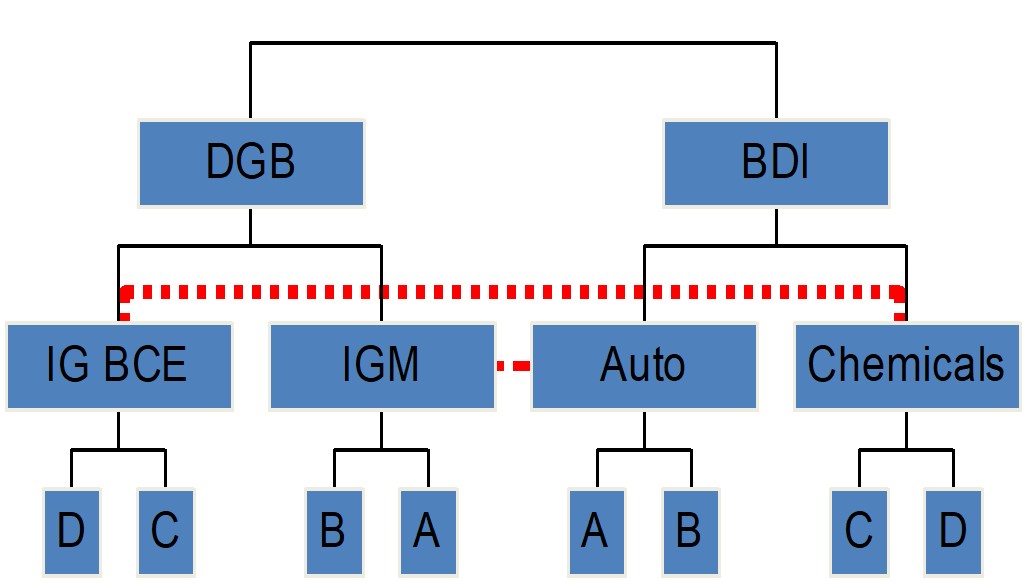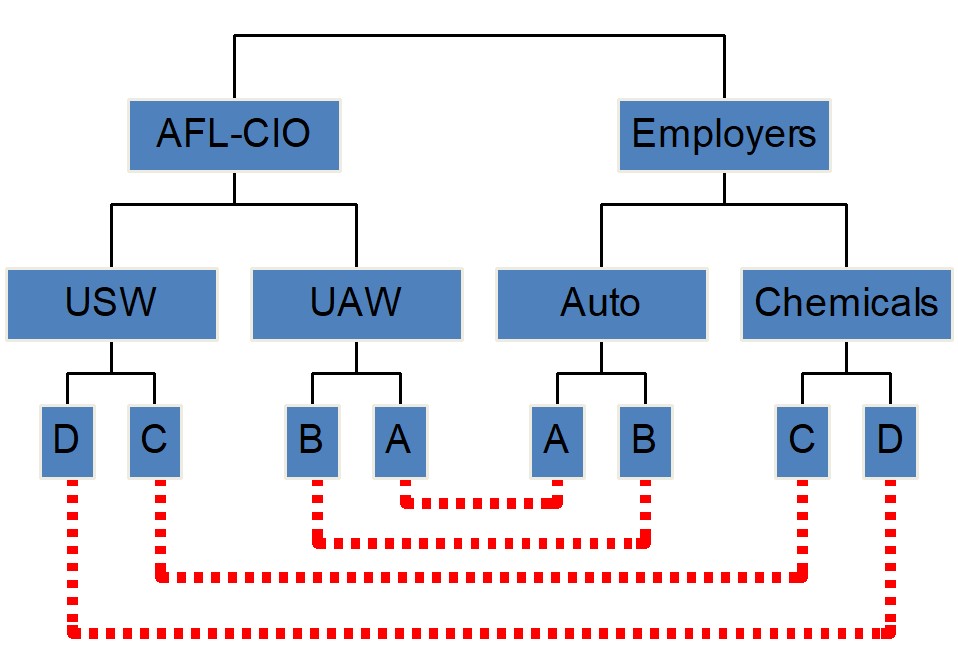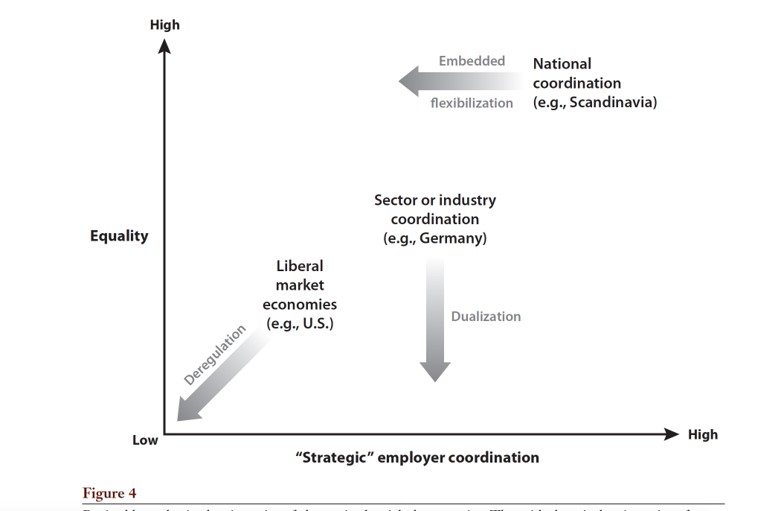Lecture 11.2
Varieties of Capitalism
What are Varieties of Capitalism?
Coordinated Capitalism
- How do “micro-agents” of capitalist systems structure their interactions?
- Employers
- Unions
- Banks
- Some countries are more coordinated than others
- Nordic and continental European countries = more coordinated
- Anglo-American countries less so
- Varieties of capitalism mainly refers to this variation in coordination
Areas of Coordination
- Industrial relations
- Coordinated wage setting
- Education and training
- Vocational training
- Company involvement in public education
- Company financing
- Role of banks versus stock markets
- Intercompany relations
- Technology sharing
- Standard setting
- Competition policy
Labor Market Coordination
Basis for generous welfare states
Key actors
- Employers’ federations
- Unions
Three ‘levels’ of interest representation
- Highly centralized (peak associations)
- Moderately centralized (industry-level agreements)
- Decentralized (enterprise-level agreements)
Centralized Bargaining
Levels of Bargaining Centralization

Notes: Hypothetical bargaining scenario with two peak associations, two industries and two companies per industry.
Highly Centralized

Notes: In this example, the national union (LO) for blue collar workers bargains with the national employer’s federation (Confederation of Swedish Enterprise) and the agreement is binding for all industries and enterprises. This system was common in Nordic countries before the 1990s but no longer exists.
Moderately Centralized

Notes: In this example, the German union for mining, chemical and engineering sector workers negotiates an agreement with employers from the chemicals sector while the metalworkers union negotiates an agreement for workers in the auto sector. This system is characteristic of Germany and Nordic countries today.
Decentralized

Notes: In this example, the United Steelworkers and United Autoworkers negotiate agreements for their workers separately for each company. There is no coordination among firms and unions at the sectoral level. This enterprise-level bargaining is common in the U.S. and other liberal market economies.
Macroeconomic Effects of Coordination
- Lowers competition
- Labor market
- Domestic product markets
- Increases financial stability
- Banks
- ‘Patient capital’
Implications
- Makes long-term planning and investment easier
- Result \(\Rightarrow\) more investment in human capital/skills
- Institutional comparative advantage argument
- Diversified Quality Products (coordinated economies)
- Require skilled labor and long-term planning
- “Radical innovation” (liberal economies)
- Require more creativity and short-term investments
- Diversified Quality Products (coordinated economies)
Theories of Emergence
- Power resources: mobilization of labor at a crucial point in history pressured employers into collective bargaining (Korpi, Stephens)
- Party systems: strength of left political parties predicts degree of coordination (Martin and Swank)
- Varieties of capitalism: coordinated capitalism exists primarily because it helps employers to be more competitive (Hall and Soskice)
- Historical institutionalism: coordination emerges out of pre-capitalist institutions like guilds that provided higher levels of vocational training and a more skilled workforce (Thelen)
The Effects of Globalization
Trends in Coordination

Source: Thelen, Varieties of Liberalization

Social Implications